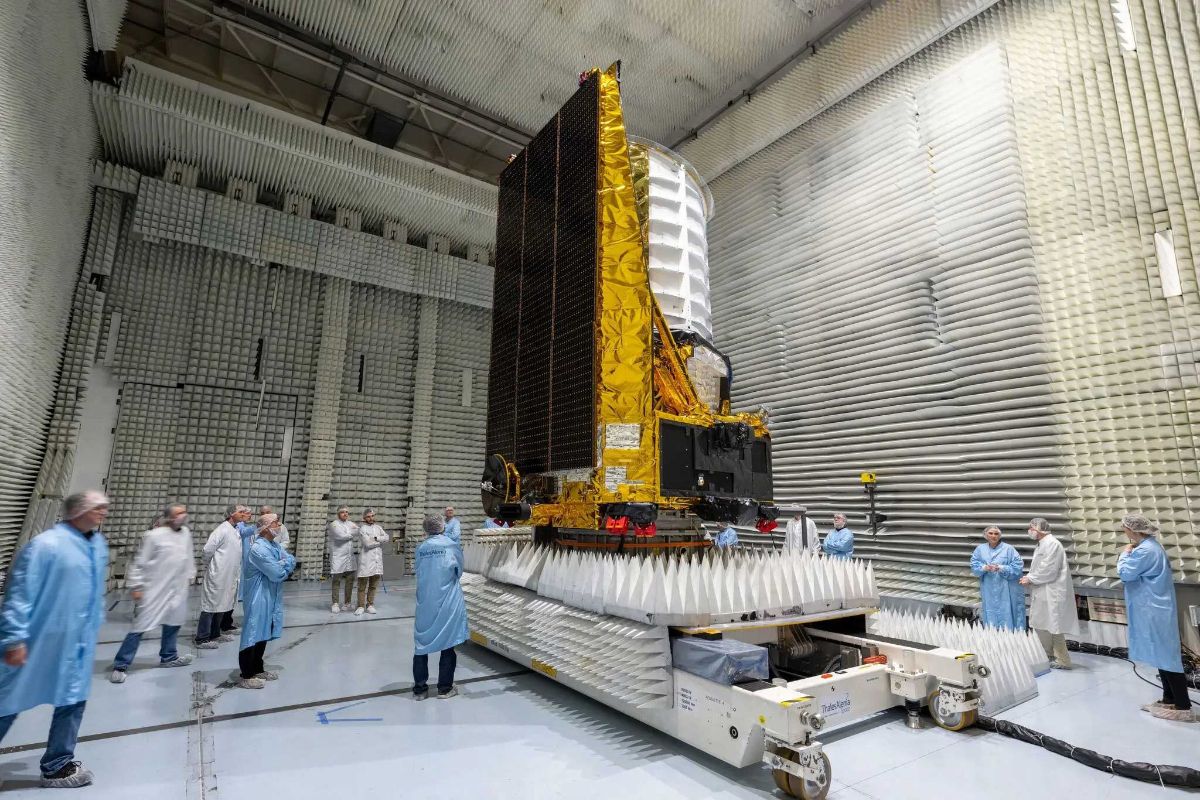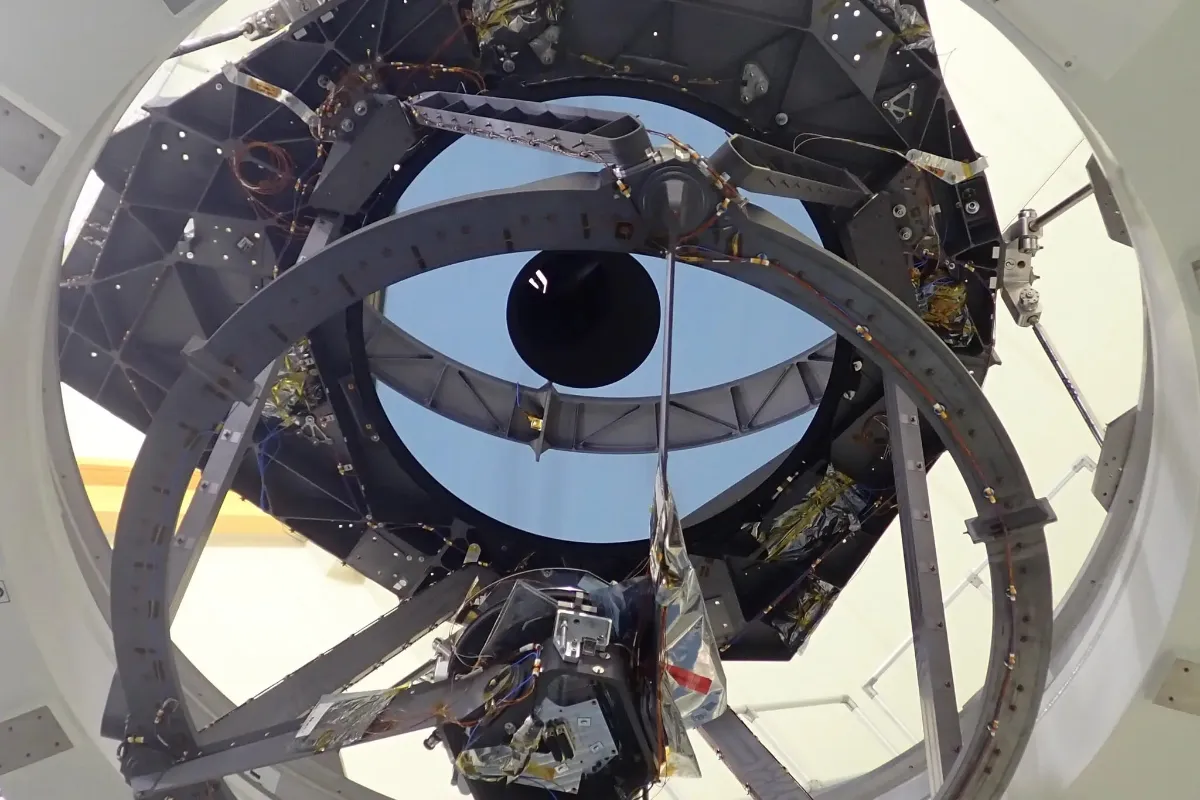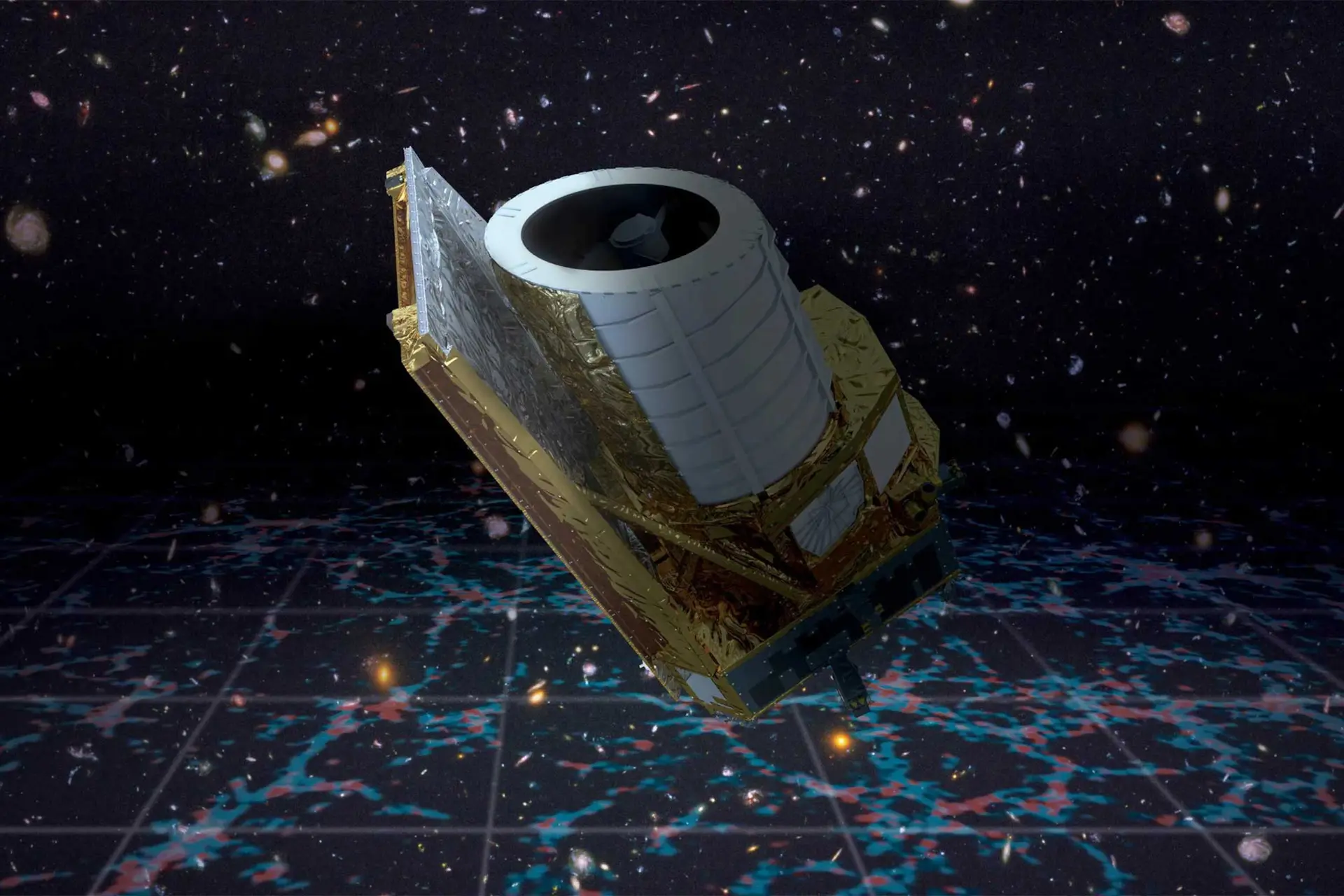Euclid Was Launched; A Pioneering Telescope To Reveal The Dark World
The European Space Agency’s Euclid Telescope Is Going To Capture Images Of Billions Of Galaxies And Answer Fundamental Questions About The Invisible Forces Behind the universe’s Expansion.
On Saturday at 18:41 Iran time, the $1.5 billion Euclid spacecraft was launched atop SpaceX’s Falcon 9 rocket to begin its mission to map the universe’s history up to 10 billion years ago.
Euclid, built by the European Space Agency, will use its instruments to record more than one-third of the extragalactic space in the next six years and will present the most accurate 3D map of the universe prepared so far.
Using Euclid’s map, the researchers plan to discover how dark matter and dark energy (mysterious phenomena that make up 95 percent of our universe) have affected what we see when we look at space and time.
Jason Rhodes, a physicist from NASA’s Jet Propulsion Laboratory, who leads the Euclid science team in the United States, said, quoted by the New York Times: “Euclid has arrived at an exciting time in the history of cosmology.” Rhodes believes that Euclid is a very suitable telescope to answer the emerging questions of the current era and can even answer questions that have not occurred to scientists.
The European Space Agency’s new telescope was launched on a SpaceX Falcon 9 rocket from Cape Canaveral, Florida. While still attached to the rocket’s upper stage, Euclid separated from the Falcon 9’s first stage booster three minutes after launch amid cheers from observers.
The spacecraft entered a stable orbit around the Earth approximately 9 minutes after liftoff; nearly 40 minutes later, by separating from the upper stage, it began a journey of about one and a half million kilometers to the deep space destination.
The Euclid telescope had no choice but to launch on top of an American rocket. The European Space Agency initially planned to send this spacecraft into space with the Russian Soyuz rocket or the new European Ariane 6 rocket; However, due to the termination of space relations between Europe and Russia after this country attacked Ukraine and the delay of the Ariane company in preparing Ariane 6, SpaceX was assigned to launch some European missions, including Euclid.
Europe’s new spacecraft will not be alone looking at the cold space.
Still, unlike the Hubble and James Webb space telescopes, which focus deeply on one part of the sky at a time, scientists will use Euclid to cover large swathes of the extragalactic sky simultaneously. In the three regions it will record, Euclid will go much deeper and depict the universe’s structure roughly a billion years after the Big Bang.
One of the targets of Euclid’s telescope is dark matter, The invisible glue of the universe that neither emits light nor absorbs or reflects it. Despite the efforts of physicists, dark matter has so far eluded direct detection; But scientists know that such an issue exists from its gravitational effect on the way galaxies move.
 Euclid spacecraft at Thales Alenia Space in Cannes, France.
Euclid spacecraft at Thales Alenia Space in Cannes, France.
On the other hand, dark energy is a much more mysterious force that pulls galaxies apart; So far, our universe is expanding at an increasing rate.
Euclid’s maps of the cosmos will show how dark matter is distributed in space-time based on the amount of light bending from galaxies behind it, or an effect known as weak gravitational convergence. It should be noted that weak gravitational convergence differs from the strong type, resulting in a more dramatic light bending by galaxy clusters, bows, rings, and even multiple images of the same source.
Measurements with Euclid will contribute to more direct efforts to understand the true nature of dark matter. “We’re looking at the same thing from different angles,” says Clara Nellist, a particle physicist at CERN who is not involved with the Euclid mission. In ground-based experiments, researchers look for signs of dark matter particles hitting their detectors. “Any information we gather about how this material is distributed in our universe helps us to look for it in a more focused way in our encounters.”
With the help of Euclid, scientists hope to test whether Einstein’s theory of general relativity works differently on a cosmological scale. Such a finding could be related to the nature of dark energy, Whether this energy is a constant force in the world or a dynamic force whose properties change over time.
Xavier Burdock, a cosmologist at the European Space Agency and a member of the Euclid team, says:
“If we find that [dark energy] is not a constant force, but a phenomenon that changes over time, then it will be a revolutionary discovery; Because it will overturn what we know about fundamental physics. “Such a discovery could even reveal the fate of our ever-expanding universe.”
 The main mirror of the Euclid space telescope has a diameter of nearly 120 cm.
The main mirror of the Euclid space telescope has a diameter of nearly 120 cm.
Euclid carries a visible light imaging instrument consisting of a 600-megapixel camera. The telescope also has a photometer and a near-infrared spectrometer, which will record galaxies at invisible wavelengths and measure their redshift.
With Saturday’s successful launch, Euclid travels nearly one and a half million kilometers to reach the second Lagrangian point, or L2, A place in the solar system where the Earth’s and the Sun’s gravitational pull reaches equilibrium. By moving in this location, the spacecraft can explore the sky extensively without being blocked by the Earth or the Moon. The James Webb Space Telescope is also located at the same spot.
It will take about a month for the spacecraft to reach the Lagrangian point 2, and another three months will be needed to test the performance of the Euclid instruments before they can start sending data back to Earth. Data from the telescope will be released publicly in 2025, 2027, and 2030.











